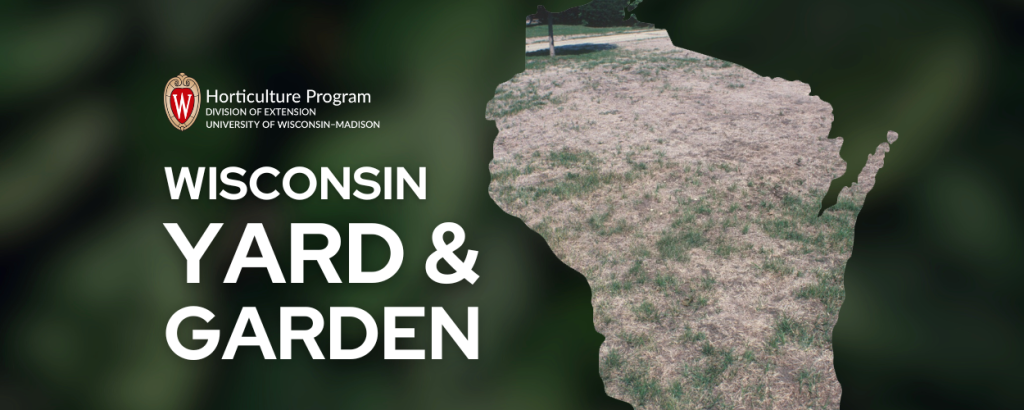
Acceptable quality lawns are the goal of many Wisconsin residents. Unfortunately, situations may occur that lead to thin, inferior quality, weed-infested, or dead lawns needing attention. We are approaching the optimum time for lawn repair and renovation.
Determining why a lawn has declined is the first step in the renovation process. Many lawn problems originate from underlying soil issues, including heavy clay, compaction, and poor drainage. On the other hand, decline may be due to pests, weather conditions, or overall improper lawn care practices. Improved mowing or timely fertilizing might be all that is required to improve lawn quality. One sidenote; keep in mind crabgrass has invaded even lawns with no underlying issues this season.
Once the problem has been identified, specific renovation plans can be made. Consider three renovation options: overseeding; improving soil while allowing existing grass to remain; or completely removing existing vegetation and starting over. Base your decision on the amount of existing desirable grass and soil conditions.
For example, thin lawns with decent underlying soil can be overseeded with quality lawn seed in late August or early September. Seed may be broadcast over thin lawn areas, but good seed-to-soil contact is essential. Prior to overseeding, remove debris and roughen the soil surface by hand raking or using power equipment, such as vertical mowers, power rakes, or dethatchers.
Slit-seeders—specialized machines that cut slits through existing grass and drop seed directly into soil—are an ideal way to overseed lawns. Slit-seeding can also be done right through inferior grass and/or weeds first killed with the nonselective herbicide glyphosate. All these overseeding procedures do not require additional soil modification.
Soil problems under existing lawns, including thatch and compaction, can be addressed without tearing up the lawn by core aerifying. Core aerifying machines will pull up numerous plugs of soil about the diameter of a pencil, making holes into the lawn. Allow the plugs to remain on the soil surface. Early fall, assuming adequate levels of soil moisture exist, is ideal timing for aerating. Aerifying and overseeding or slit-seeding (breaks up cores) may be an ideal level of renovation for many lawns.
Unfortunately, lawn problems such as little desirable grass and underlying soil problems of severe compaction, high clay levels, or poor drainage require total renovation, or starting over. High populations of perennial weed species need to be removed by hand or may require use of a nonselective herbicide, such as glyphosate. Start the process in mid-August. Thoroughly work soils to a depth of four to six inches, adding amendments such as compost, rotted manure, organic topsoil, or peat. Seed the area by early September.

About the Author
Bruce Spangenberg is a Horticulture Outreach Specialist with UW-Madison Division of Extension. Get answers to your lawn, landscape and garden questions anytime at “Ask Your Gardening Question.”




